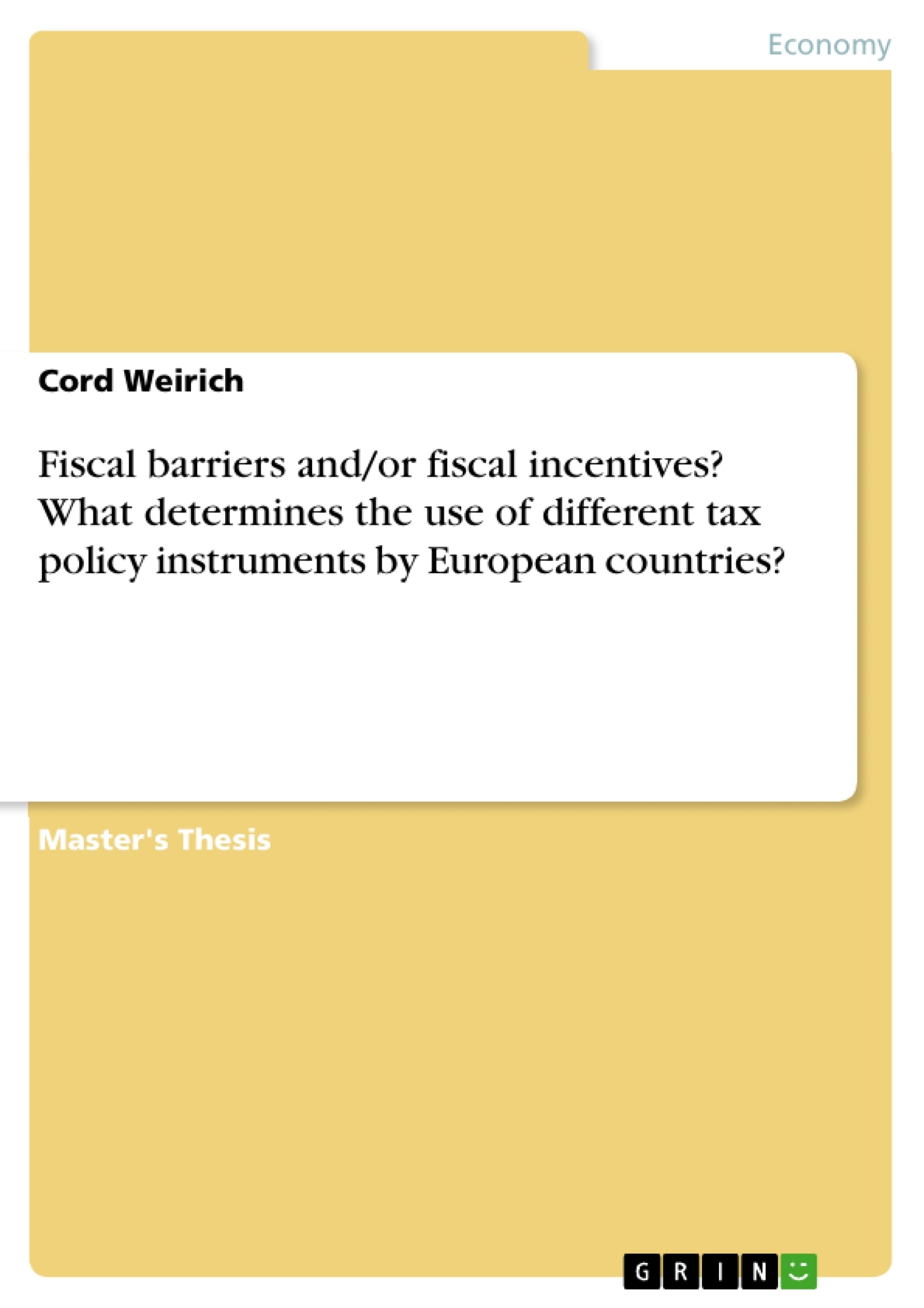The thesis analyzes how European countries deploy different fiscal instruments (i.e., fiscal barriers and incentives) in the context of tax competition.
The first part of the thesis (International Taxation) gives a brief introduction to the aspects of international taxation which are relevant for the subsequent analysis. The second part (Fiscal instruments in the context of tax competition) provides a detailed overview of the fiscal incentives and fiscal barriers that are used in the context of tax competition. Moreover, through the application of a scoring system, it provides a detailed assessment of each country‘s positioning (i.e., competitive vs. defensive) with respect to individual instruments as well as on an aggregate basis. Building on these findings, the third part (Quantitative analysis) of the thesis provides a further, quantitative analysis. It analyses the correlation of fiscal instruments with one another as well as with selected attributes of the countries (e.g., the size of the economy).
Thirty European countries were analyzed: Austria, Belgium, Bulgaria, Croatia, Cyprus, Czech Republic, Denmark, Estonia, Finland, France, Germany, Greece, Hungary, Ireland, Italy, Latvia, Lithuania, Luxembourg, Malta, the Netherlands, Norway, Poland, Portugal, Romania, Slovakia, Slovenia, Spain, Sweden, Switzerland and the United Kingdom.
Inhaltsverzeichnis (Table of Contents)
- Introduction
- Motivation
- Research question & approach
- International Taxation
- Principles of international taxation
- The role of multinational enterprises
- The role of governments
- Fiscal instruments in the context of tax competition
- Tax rate and base
- Fiscal barriers
- Transfer pricing
- Thin-capitalization rules & limitation on interest
- Withholding taxes
- Controlled foreign company legislation
- Exit taxation
- Exemption rules & switch-over clauses
- General anti-avoidance rules
- Exchange of information
- Fiscal incentives & non-enforcement
- Tax incentives
- Non-recognition of permanent establishments
- Facilitation of hybrid-mismatch arrangements
- Advance pricing agreements & other tax rulings
- Non-enforcement
- Conclusion
- Quantitative analysis
- Methodology and data
- Selection of variables
- Conclusion
- Final conclusion
Zielsetzung und Themenschwerpunkte (Objectives and Key Themes)
This Master's thesis investigates the factors that influence the use of different tax policy instruments by European countries, particularly focusing on the strategic interplay between fiscal barriers and incentives in international tax competition.
- Examining the role of fiscal instruments in managing international tax competition
- Analyzing the interplay between fiscal barriers and incentives in shaping tax policies
- Exploring the factors that influence the use of different tax policy instruments by European countries
- Investigating the motivations and strategies of multinational enterprises and governments in international tax competition
- Developing a theoretical framework for understanding the strategic interaction between governments and firms in international tax competition
Zusammenfassung der Kapitel (Chapter Summaries)
- Introduction: This chapter introduces the motivation behind the study, outlining the research question and the chosen approach. It emphasizes the growing complexity of international tax competition and the need to understand how governments utilize different tax instruments to manage it.
- International Taxation: This chapter provides a foundational understanding of international taxation principles, examining the roles of multinational enterprises and governments in shaping the global tax landscape. It highlights the challenges and opportunities associated with international tax competition and the need for effective regulatory frameworks.
- Fiscal instruments in the context of tax competition: This chapter delves into the various fiscal instruments used in the context of tax competition, examining both barriers and incentives. It presents a detailed analysis of different tax policies, including transfer pricing, thin-capitalization rules, withholding taxes, controlled foreign company legislation, exit taxation, exemption rules, general anti-avoidance rules, exchange of information, tax incentives, non-recognition of permanent establishments, facilitation of hybrid-mismatch arrangements, advance pricing agreements, and non-enforcement.
- Quantitative analysis: This chapter discusses the methodological approach and data used for the quantitative analysis. It elaborates on the selection of variables and the analysis of the relationship between tax policies and specific economic indicators.
Schlüsselwörter (Keywords)
This Master's thesis primarily focuses on international tax competition, fiscal instruments, fiscal barriers, fiscal incentives, multinational enterprises, European Union, and the strategic interplay between governments and firms in managing global taxation.
- Citar trabajo
- Cord Weirich (Autor), 2016, Fiscal barriers and/or fiscal incentives? What determines the use of different tax policy instruments by European countries?, Múnich, GRIN Verlag, https://www.grin.com/document/442574



